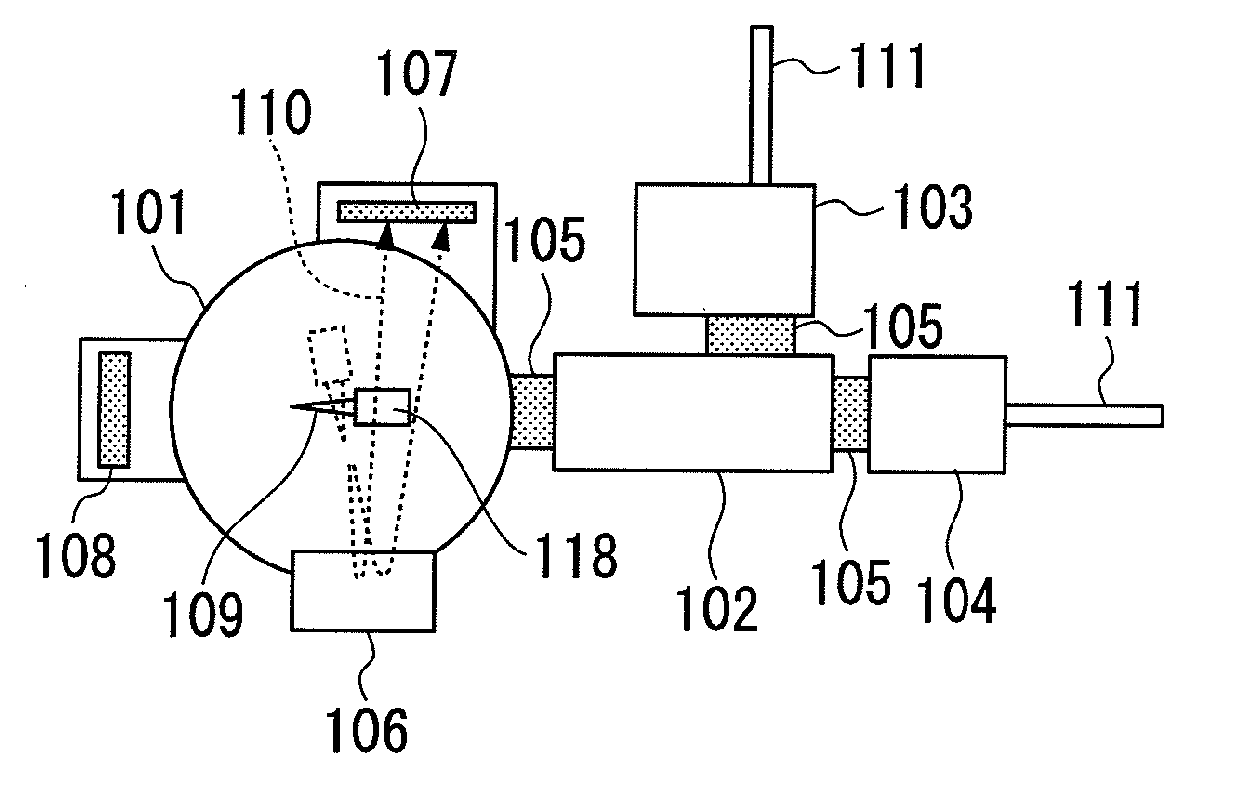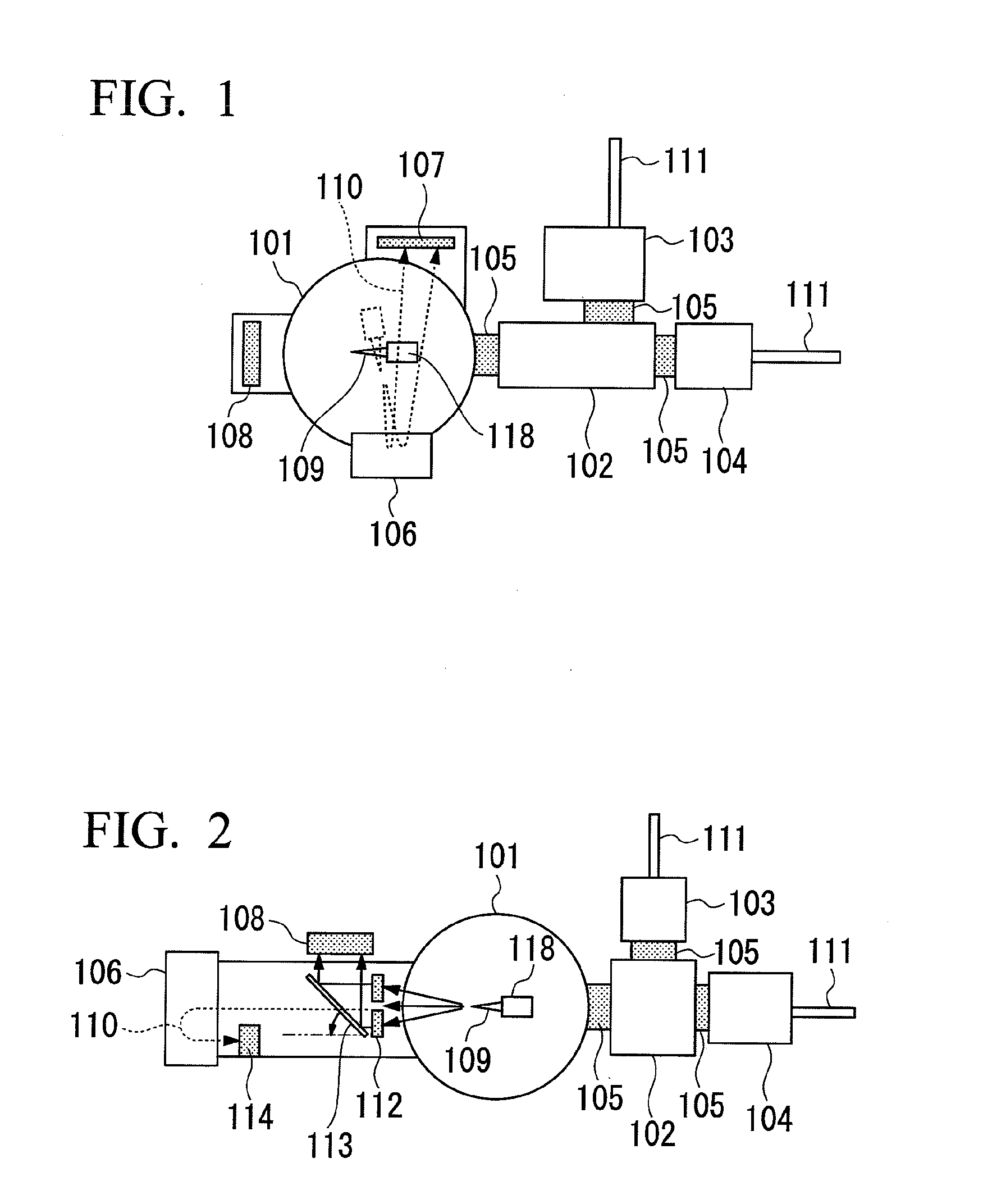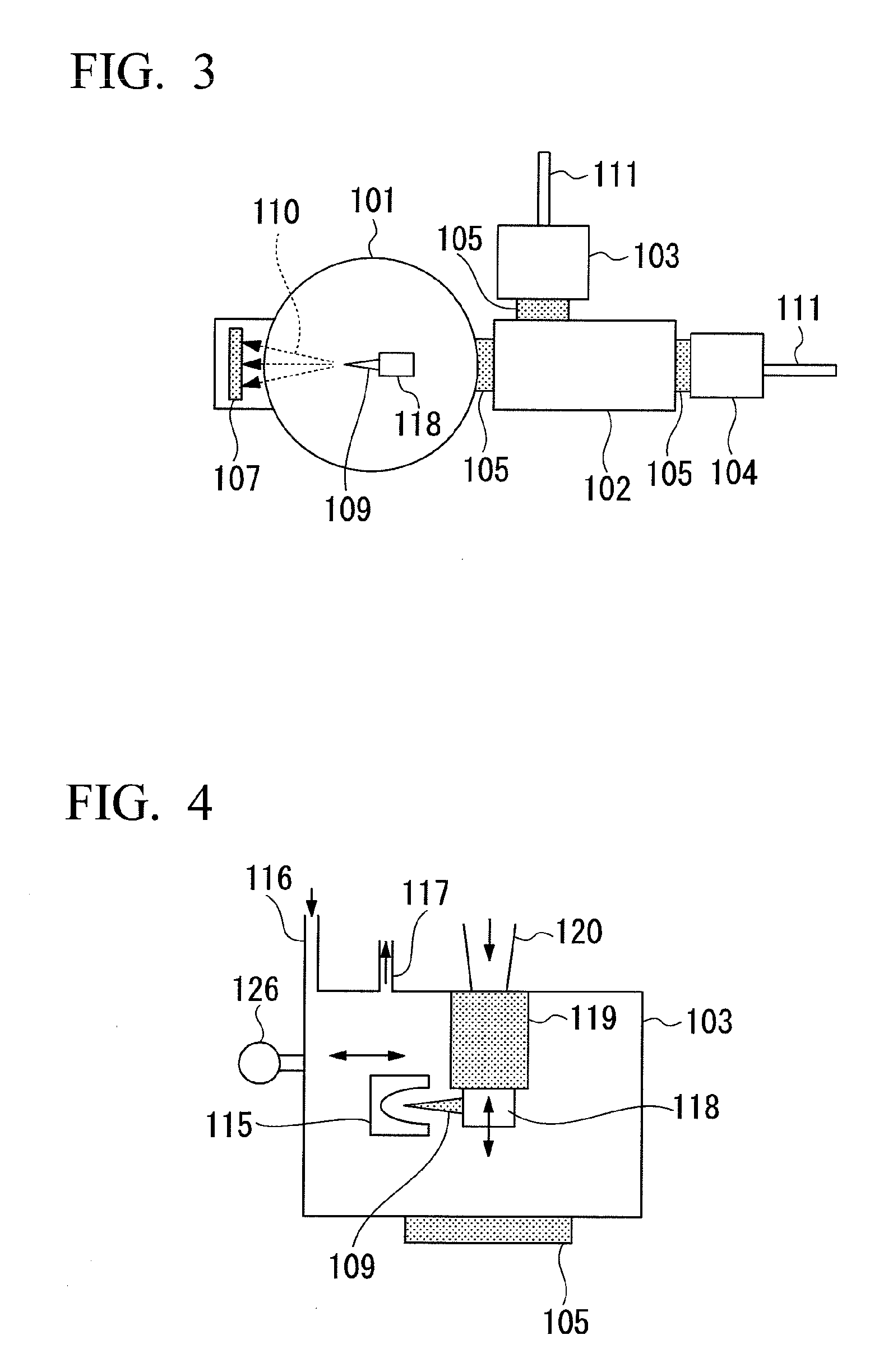Gas charge container, atom probe apparatus, and method for analyzing hydrogen position in material
a hydrogen position and gas charge technology, applied in the field of gas charge containers, atom probe apparatus, and methods for analyzing hydrogen positions in materials, can solve problems such as hydrogen embrittlement, weakening the bonding force between atoms, and countermeasures taken
- Summary
- Abstract
- Description
- Claims
- Application Information
AI Technical Summary
Benefits of technology
Problems solved by technology
Method used
Image
Examples
example 1
[0102]In order to investigate the temperature of the needle-shaped material 109 during the deutrium charge, a sample holder 118 for measurement resembling a needle-shaped material 109 was prepared in accordance with the actual needle-shaped material 109 and the sample holder 118 using the gas charge container 103 shown in FIG. 4 so that the tip of a thermocouple was located at a position 10 mm apart from the sample holder 118, and temperature measurement was performed. The inside of the gas charge container 103 shown in FIG. 4 was evacuated to 2×10−8 Torr (2.6×10−6 Pa) from an evacuation line 117 by a pump.
[0103]In this state, liquid nitrogen was poured into a liquid nitrogen container 120, and the cold finger 119, and the sample holder 118 and the needle-shaped material 109 which were brought into contact with the cold finger were cooled. The temperature of the needle tip of the needle-shaped material 109 became −115° C. about 40 minutes after the start of the cooling. The deutrium...
example 2
[0106]A needle-shaped material 109 made of a drawn pearlite steel wire worked with the radius of curvature of the needle tip being 50 nm was attached to the sample holder 118 as shown in FIG. 4, and was introduced into the sample introduction container 104 used in Example 1. Then, the sample holder 118 was transferred into the gas charge container 103 shown in FIG. 4 along with the needle-shaped material 109, using the transfer rod 111, and the needle-shaped material heater 115 was arranged near the needle-shaped material 109.
[0107]The inside of the gas charge container 103 was evacuated to a high vacuum of 2×10−8 Torr (2.6×10−6 Pa) by an evacuation line 117. Thereafter, the cold finger 119 of the liquid nitrogen container 120 into which liquid nitrogen was introduced was brought into close contact with the sample holder 118, and the sample holder 118 was cooled to −180° C. In this state, the deutrium was charged into the needle-shaped material 109 by introducing the deutrium gas fr...
example 3
[0109]A needle-shaped material 109 made of precipitate-dispersed steel worked with the radius of curvature of the needle tip being 60 nm was attached to the sample holder 118, and was introduced into the sample introduction container 104 of the apparatus of the present invention. Then, the needle-shaped material 109 was arranged in a heating position of the needle-shaped material 109 by transferring the sample holder 118 into the gas charge container 103 shown in FIG. 5 along with the needle-shaped material 109, using the transfer rod 111.
[0110]After the inside of the gas charge container 103 was evacuated to a high vacuum by the evacuation line 117, the sample holder 118 was screwed into the cold finger 119 which was cooled by operating the refrigerator 121, and the sample holder 118 was cooled to −200° C.
[0111]In this state, the deutrium was charged into the needle-shaped material 109 by introducing the deutrium gas to 600 Torr (7.98×104 Pa) from the deutrium gas introduction line...
PUM
 Login to View More
Login to View More Abstract
Description
Claims
Application Information
 Login to View More
Login to View More - R&D
- Intellectual Property
- Life Sciences
- Materials
- Tech Scout
- Unparalleled Data Quality
- Higher Quality Content
- 60% Fewer Hallucinations
Browse by: Latest US Patents, China's latest patents, Technical Efficacy Thesaurus, Application Domain, Technology Topic, Popular Technical Reports.
© 2025 PatSnap. All rights reserved.Legal|Privacy policy|Modern Slavery Act Transparency Statement|Sitemap|About US| Contact US: help@patsnap.com



